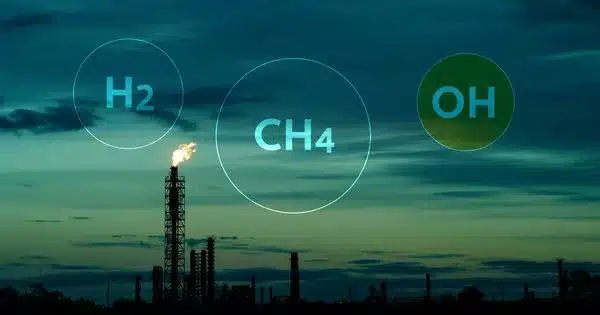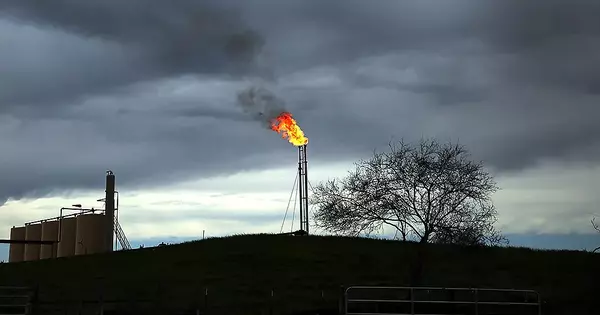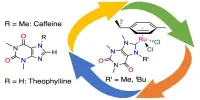Using hydrogen fuel instead of traditional fossil fuels could have both beneficial and bad implications on the environment and climate change, including an impact on the methane problem. Hydrogen is frequently promoted as the clean fuel of the future, but recent research reveals that leaky hydrogen infrastructure may wind up raising atmospheric methane levels, with long-term climatic effects.
According to research from Princeton University and the National Oceanic and Atmospheric Association, the potential of hydrogen as a clean fuel may be limited by a chemical reaction in the lower atmosphere.
This is due to the ease with which hydrogen gas combines in the atmosphere with the same molecule that is principally responsible for breaking down methane, a potent greenhouse gas. If hydrogen emissions are above a particular level, the shared response will almost certainly result in methane accumulation in the atmosphere, with long-term climate effects.
“Hydrogen is theoretically the fuel of the future,” said Matteo Bertagni, a postdoctoral researcher at the High Meadows Environmental Institute who works on the Carbon Mitigation Initiative. “In practice, however, it raises numerous environmental and technological concerns that must still be addressed.”
Hydrogen is theoretically the fuel of the future. In practice, however, it raises numerous environmental and technological concerns that must still be addressed.
Matteo Bertagni
Bertagni is the first author of a study published in Nature Communications that modeled the impact of hydrogen emissions on atmospheric methane. They discovered that, at a certain level, a leaky hydrogen economy could cause near-term environmental impact by increasing the amount of methane in the atmosphere, even when replacing fossil fuel usage. The danger is heightened for hydrogen production systems that use methane as an input, emphasising the vital need to manage and reduce emissions from hydrogen production.
“We have a lot to learn about the consequences of using hydrogen, so the switch to hydrogen, a seemingly clean fuel, doesn’t create new environmental challenges,” said Amilcare Porporato, Thomas J. Wu ’94 Professor of Civil and Environmental Engineering and director of the High Meadows Environmental Institute. Porporato is a principal investigator and member of the Carbon Mitigation Initiative’s Leadership Team, as well as an associate faculty member at the Andlinger Centre for Energy and the Environment.
The hydroxyl radical (OH) is a small, difficult-to-measure molecule that is at the heart of the problem. OH, often known as “the detergent of the troposphere,” plays an important function in removing greenhouse gases like methane and ozone from the environment.

In addition, the hydroxyl radical combines with hydrogen gas in the environment. And, because OH is produced in limited quantities each day, any increase in hydrogen emissions means that more OH is utilised to break down hydrogen, leaving less OH available to break down methane. As a result, methane would stay in the atmosphere for longer, extending its warming effects.
Bertagni believes that the implications of a hydrogen spike, which could occur as government incentives for hydrogen production rise, could have long-term climate consequences for the world.
“If you emit some hydrogen into the atmosphere now, it will lead to a progressive build-up of methane in the following years,” Bertagni said. “Even though hydrogen only has a lifespan of around two years in the atmosphere, you’ll still have the methane feedback from that hydrogen in 30 years from now.”
In the study, the researchers identified the tipping point at which hydrogen emissions would lead to an increase in atmospheric methane and thereby undermine some of the near-term benefits of hydrogen as a clean fuel. By identifying that threshold, the researchers established targets for managing hydrogen emissions.
“It is critical that we be proactive in establishing hydrogen emission thresholds so that they can be used to inform the design and implementation of future hydrogen infrastructure,” Porporato added.
Bertagni stated that the essential threshold for hydrogen emissions is roughly 9% for green hydrogen, which is created by splitting water into hydrogen and oxygen using renewable electricity. That means that if more than 9% of the green hydrogen produced leaks into the atmosphere – whether at the point of production, during transportation, or elsewhere along the value chain – atmospheric methane will rise over the next few decades, cancelling out some of the climate benefits of moving away from fossil fuels.
The threshold for emissions is significantly lower for blue hydrogen, which is hydrogen produced through methane reforming with subsequent carbon capture and storage. Because methane is the principal input for the methane reforming process, blue hydrogen producers must account for direct methane leakage in addition to hydrogen loss. The researchers discovered, for example, that even with a methane leakage rate as low as 0.5%, hydrogen leakages would have to be kept below 4.5% to avoid increasing atmospheric methane concentrations.
“Managing leakage rates of hydrogen and methane will be critical,” Bertagni said. “If you have just a small amount of methane leakage and a bit of hydrogen leakage, then the blue hydrogen that you produce really might not be much better than using fossil fuels, at least for the next 20 to 30 years.”
The researchers emphasised the significance of the time scale used to assess the influence of hydrogen on atmospheric methane. Bertagni stated that even if methane and hydrogen leakage levels are high enough to cause near-term warming, switching to a hydrogen economy will likely offer net benefits to the environment in the long run (over a century, for example). He predicted that atmospheric gas concentrations would eventually achieve a new equilibrium, and that the transition to a hydrogen economy would demonstrate its climate benefits. However, before that, the possible short-term impacts of hydrogen emissions could cause irreversible environmental and economical damage.
Bertagni stressed that if institutions expect to fulfil mid-century climate targets, hydrogen and methane leaks to the atmosphere must be controlled when hydrogen infrastructure is deployed. And, because hydrogen is a small molecule that is notoriously difficult to monitor and quantify, he noted that reducing emissions will almost certainly necessitate researchers developing new systems for tracking hydrogen losses along the value chain.
















